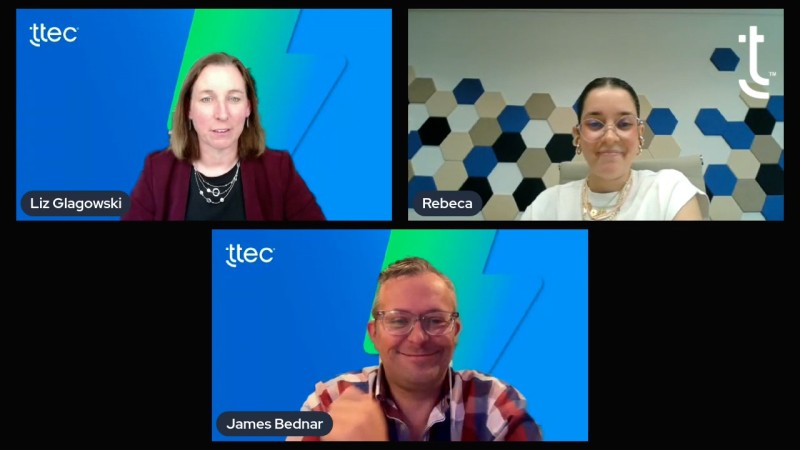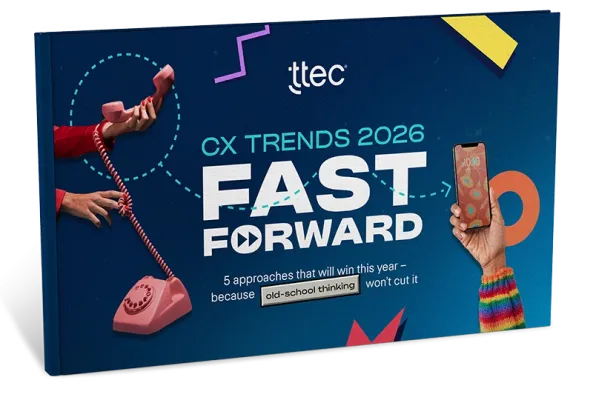Voice translation tools of the past never quite lived up to their promise: translations weren’t always accurate, conversations didn’t feel natural, and lag times frustrated customers and associates alike. But AI has changed the game.
TTEC experts dove into recent cutting-edge advances in real-time translation – and the wide-ranging benefits they can bring brands – in our webinar, “Speak every customer’s language with instant voice translation.”
If you’re clinging to outdated notions about real-time translation, it’s time to take another look.
Instant access to nearly every language
Finding talent who can speak various languages has long been problematic for contact center operators. Some language support is easier to come by than others, but some languages are notoriously difficult to find. High-quality, multilingual support has traditionally been an expensive undertaking for companies.
“Staffing across every language is a big challenge,” said James Bednar, vice president of product and innovation at TTEC. “The prospect of being able to use translation and AI interpretation opens the doors to a lot of possibilities.”
For too long, brands have had to choose their support teams’ location based on language. It’s a time-consuming and expensive approach that forces companies to forego preferred geographies simply because they need to satisfy language requirements. With real-time translation tools, like TTEC’s award-winning ADDI, brands can take language requirements out of the equation and hire in the locations that best suit their overall needs.
ADDI supports more than 30 languages and translates speech in less than a second. It provides natural-sounding AI voices and lets brands access flexible support options for genders, languages, and regional accents.
Its speed is one of its greatest benefits, Bednar noted, since older translation technologies have been plagued by lag times. If a tool takes a minute to translate a conversation, no one will use it, he added.
“With translation, it needs to be fast; it needs to be accurate,” he said.
In pilots, ADDI has reduced wait times, decreased frustration, and improved efficiency. We project ADDI can reduce spending on human interpreters by more than 80% and reduce spending on challenging language support by up to $30,000 per full-time equivalent (FTE) annually.
Infrastructure enables translation innovation
Investments in AI infrastructure and data centers are on the rise, so the underlying technology that powers solutions like ADDI works very quickly and accurately. This is critical; as real-time translation becomes embedded in platforms like YouTube and LinkedIn, consumers are starting to expect it on every platform and in every interaction, Bednar noted.
Customers are increasingly willing to interact with AI, especially if they believe it will improve their experience. When ADDI enters a conversation, “she” introduces “herself” as an AI agent, which is important.
“When a customer knows there’s an AI interpreter in the mix, they’re a little more patient,” Bednar said.
With ADDI, both participants in an interaction get their own experience in their native language. Customers and associates like feel understood, leading to a greater sense of connection – and better, faster resolutions.
AI-powered, real-time translation can benefit brands even if they already have multilingual support in place. Tools like ADDI can cover hours of operation when humans aren’t available or add capacity during periods of peak demand.
Check out the full conversation, and see a demo of ADDI in action, in our on-demand webinar, “Speak every customer’s language with instant voice translation.”
















